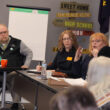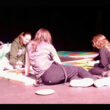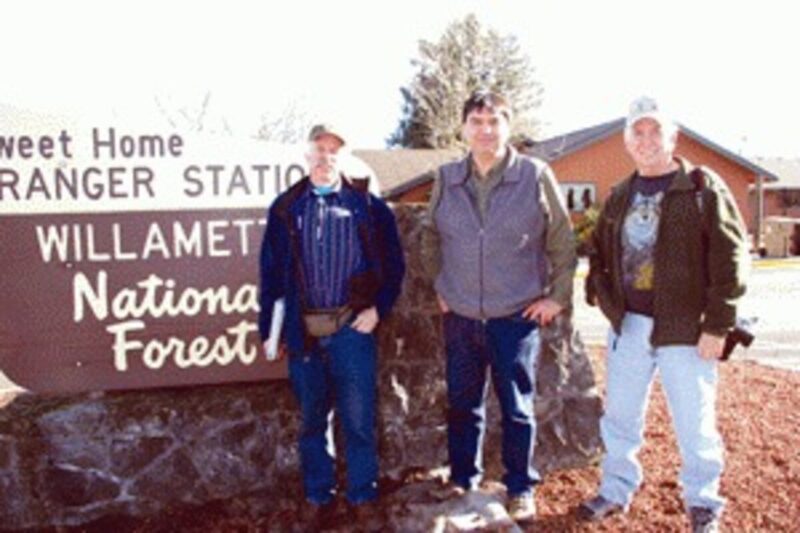Scott Swanson
Of The New Era
Lumber from the Sweet Home Ranger District will be part of a new Native American longhouse being constructed at Lane Community College.
The U.S. Department of Forestry is providing approximately 7,500 to 8,000 board feet of cedar for the 6,000-square-foot longhouse, which will be used as a center for the some 600 Native American students at LCC.
Richard Archambault, a free-lance photographer who is a member of the LCC Longhouse Fund Committee, said that the project has been in the works for “many years” after it was conceived by Frank Merrill, a Karuk Indian from Northern California who founded the Native American Program at LCC 14 years ago. The program has grown, Archambault said, to the point that Indian languages classes are scheduled to be taught next year by native speakers.
“He wanted to build a longhouse on campus,” Archambault said of Merrill, who has retired. Archambault, who is himself half Lakota Sioux, said he got involved when he was a student at LCC.
“This is the first longhouse built at any public community college campus in the nation,” he said.
He said the longhouse will help Native American students who come from reservations to acclimate to the outside world.
“Some of them have never lived anywhere else,” Archambault said. “We lose a lot of students. They come down here and get scared and go back to the reservation.
“Here, they can talk to people when they have problems. In the Longhouse, in time of injury and illness, Indians could go there and talk to some of spiritual people, be healed and be safe. It was a safe place, in time of war, to gather and make plans.”
The LCC longhouse will include kitchen facilities and outside firepits for cooking salmon the traditional way, office space, dressing rooms, a dance floor surrounded by cedar, a hall of honor that will include cedar poles representing the nine confederated tribes of Oregon, and storage and display facilities for tribal artifacts and equipment.
Groundbreaking for the project began in December, on a knoll overlooking the athletic fields. Archambault said $800,000 of the $1.2 million needed for the facility has been raised, in cash, goods or services.
Tony Farque, archaeologist for the Sweet Home Ranger District, said the local cedar will come from an area about 30 miles east of Sweet Home in the upper and middle Santiam drainage.
He said the area was burned over heavily 75 years ago and there are standing dead cedars that need to be removed.
“We’re providing those resources to the project,” he said, adding that the fact that the wood will go to a use that is “educational, multicultural and tribal” makes it even more attractive to the government.
“The way it works, an Indian tribe or educational institution can request from government agencies resources for traditional (tribal) activities or for educational or demonstration purposes for a (college) application like this,” he said. “This kind of combines the two. In Sweet Home we’ve been doing this for years.”
He said tribes want cedar because it is considered the tree of life in Northwest tribal cultures.
Farque said the tribes come to him when they need wood for cultural uses.
“These are part of the ancestral lands and the National Forest Service manages these lands,” he said. “The tribes see us as gatekeepers of the trees. It’s rewarding.”
The trees to be used in the longhouse project will be harvested and transported by local logger Gary Olsen.
Archambeault said that in addition to being a support center for Native Americans, the longhouse will serve to share Indian culture with others.
“We’re building this to share our culture with other people,” he said, noting that many have false notions of what the Indians were about. “We don’t all wear feathers.”





